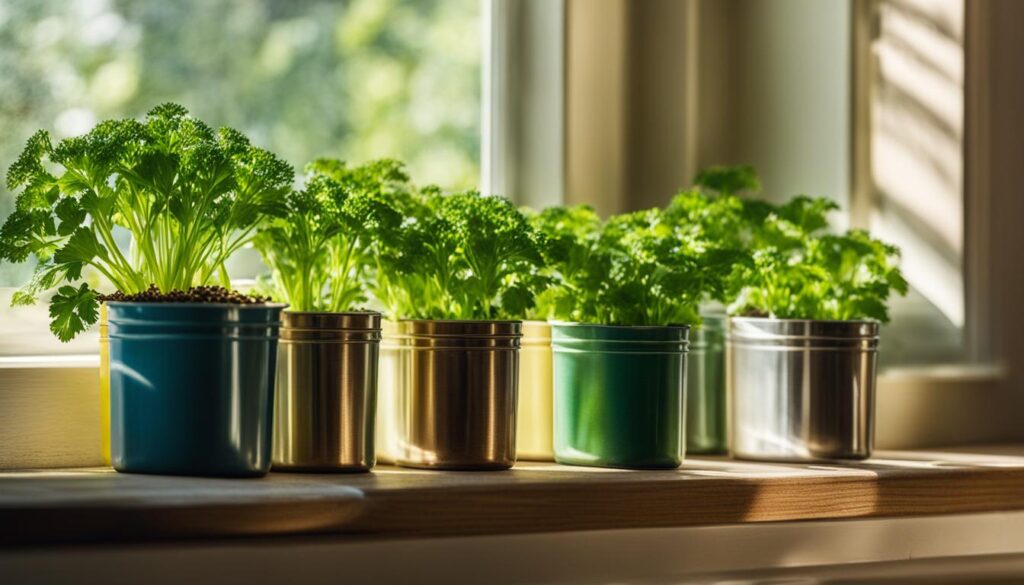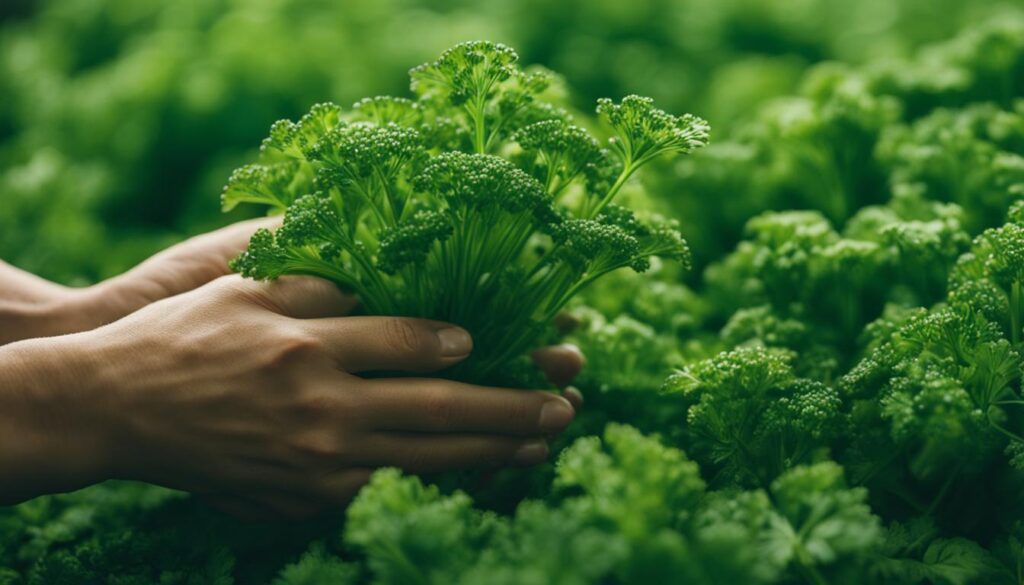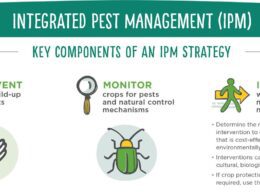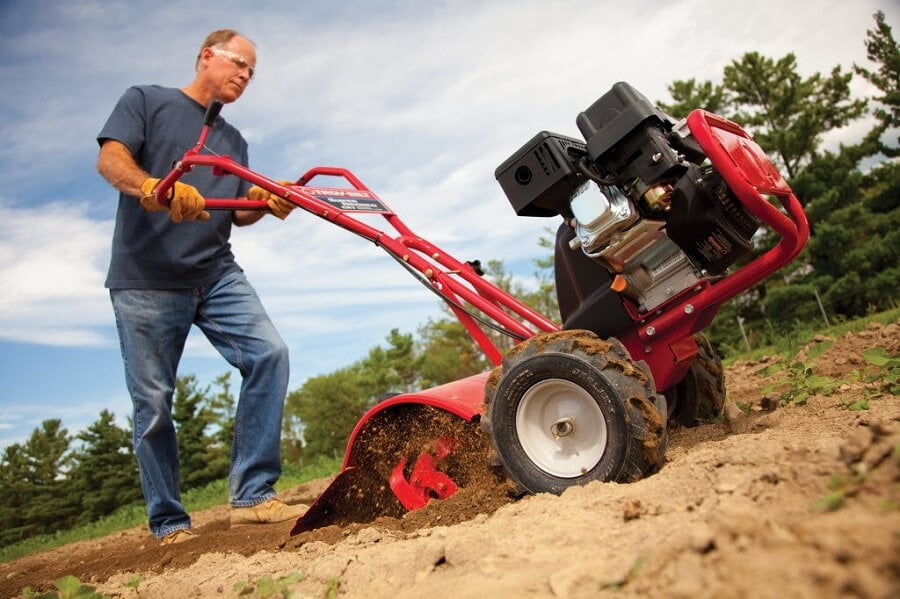Welcome to the ultimate guide on growing parsley! Whether you have a green thumb or are new to gardening, this comprehensive guide will provide you with all the information you need to successfully grow parsley plants in your garden or even indoors. Parsley is a versatile herb that adds a fresh and vibrant touch to your culinary creations. So let’s dive in and discover the secrets to growing parsley.
Post Summary:
- Growing parsley is easy and rewarding, whether you choose to plant it in your garden or indoors.
- Parsley can be grown alongside other plants in beds, containers, and window boxes.
- Plant parsley in nutrient-rich soil with a pH of 5.5 to 6.7, and provide it with full sun or partial shade depending on your climate.
- Regularly feed parsley with water-soluble plant food to promote lush foliage growth.
- Harvest parsley by cutting the leafy stems and use it as a garnish or in various culinary dishes.
Planting Parsley in Your Garden
When it comes to planting parsley in your garden, timing is key. You’ll want to wait until the spring when the ground is workable. This ensures optimal conditions for the parsley seeds to germinate and thrive.
To plant parsley, choose an area in your garden that receives full sun. Parsley plants require at least 6 to 8 hours of sunlight each day to grow to their full potential. Additionally, it’s important to select nutrient-rich, well-drained soil with a pH level between 5.5 and 6.7. If you’re gardening in a warmer climate, consider providing partial shade to protect the parsley from excessive heat.
Before planting, prepare the soil by enriching it with aged compost or other organic matter. This will provide the necessary nutrients for your parsley plants to flourish. Once the soil is ready, space the parsley plants 6 to 8 inches apart to give them ample room to grow. Water the plants regularly to keep the soil consistently moist, and consider feeding them with a water-soluble plant food to promote prolific leaf production.
Remember, parsley is a versatile herb that can be grown not only in garden beds but also in containers and window boxes. So, whether you have a spacious backyard or a small balcony, you can enjoy the fresh taste of homegrown parsley.
Planting Parsley: Quick Tips
- Plant parsley in the spring when the ground is workable.
- Choose an area with full sun or partial shade for warm climates.
- Ensure the soil is nutrient-rich, well-drained, and has a pH level between 5.5 and 6.7.
- Enrich the soil with aged compost or organic matter before planting.
- Space parsley plants 6 to 8 inches apart.
- Keep the soil consistently moist and feed regularly with a water-soluble plant food.
Parsley Planting Calendar
| Region | Planting Time |
|---|---|
| North | Spring (after the last frost) |
| South | Spring (after the last frost) or fall |
| West | Spring or fall |
| Midwest | Spring (after the last frost) or fall |
Planting parsley in the right conditions will ensure a bountiful harvest of this flavorful herb. With a little planning and care, you’ll be able to enjoy fresh parsley straight from your own garden.
Soil, Planting, and Care for Growing Parsley
When it comes to growing parsley, paying attention to soil quality is crucial. Parsley thrives in well-drained soil with a pH level between 5.5 and 6.7. To ensure your soil meets these requirements, it’s recommended to use aged compost-enriched soil. Not only does compost improve soil fertility and drainage, but it also enhances the flavor profile of parsley.
If you’re planning to grow parsley in containers, using a lighter and fluffier soil mix is recommended. This type of soil provides better drainage for potted plants, preventing waterlogged roots. Remember to replenish nutrients throughout the growing season by feeding your parsley with an organic plant nutrition product. This will help promote healthy growth and ensure a bountiful harvest.
Proper watering is essential for parsley plants. Water the plants deeply whenever the top inch of soil becomes dry. This will prevent the soil from drying out completely, which can be detrimental to parsley’s growth. Adding a light layer of mulch around the plants can help keep the soil cool and moist, reducing the need for frequent watering.
Parsley Care Tips
Parsley care involves regular maintenance to keep the plants healthy and productive. Here are a few tips to keep in mind:
- Trimming: In September, it’s recommended to cut back parsley plants to promote new foliage growth. This will help maintain the plant’s vigor and prevent it from going to seed prematurely.
- Pest Control: While parsley is generally resistant to pests, it can occasionally attract whiteflies. To combat these pests, spray the undersides of the leaves thoroughly with an insecticidal soap.
- Disease Prevention: Keep an eye out for stem rot and leaf spots, which are common diseases that can affect parsley plants. Regularly inspect the plants for any signs of disease and take appropriate measures to prevent their spread.
Parsley Soil Requirements
For optimal growth, parsley requires well-drained soil with a slightly acidic pH. The soil should be rich in organic matter and nutrients. If you’re unsure about your soil’s pH level or nutrient content, consider getting a soil test done. This will provide you with valuable information to help you amend the soil accordingly and create an ideal environment for growing parsley.
Troubleshooting when Growing Parsley
When growing parsley, it’s important to be aware of potential pests and diseases that can affect your plants. By understanding how to identify and prevent these issues, you can ensure the health and vitality of your parsley crop. Here are some common problems you may encounter when growing parsley, along with tips on how to address them:
Parsley Pests
Parsley is a favorite food of the black swallowtail butterfly caterpillar. While these caterpillars may eat a lot of the plant, their presence won’t kill it. In fact, providing them with habitat can be beneficial for the overall ecosystem. However, if you’re dealing with other pests such as whiteflies, there are steps you can take to control them.
Tip: To get rid of whiteflies on parsley, spray the undersides of the leaves thoroughly with an insecticidal soap. This will help eliminate the pests and prevent further damage to your plants.
Parsley Diseases
Two common diseases that can affect parsley plants are stem rot and leaf spots. Stem rot is caused by fungi and can result in the wilting and decay of the plant’s stems. Leaf spots, on the other hand, are characterized by the appearance of dark spots on the leaves.
Tip: To prevent stem rot and leaf spots, make sure to provide good air circulation around your parsley plants. Avoid overwatering, as excess moisture can promote the growth of fungi. If you notice any infected leaves or stems, remove them promptly to prevent the spread of disease.
| Parsley Pests | Parsley Diseases |
|---|---|
| Black swallowtail butterfly caterpillar | Stem rot |
| Whiteflies | Leaf spots |
By keeping a close eye on your parsley plants and addressing these issues promptly, you can ensure the long-term health and productivity of your crop. Remember to monitor your plants regularly, provide proper care and maintenance, and take action at the first sign of trouble. With these troubleshooting tips, you’ll be well-equipped to handle any challenges that may arise while growing parsley.
How to Harvest and Store Parsley
Parsley is a versatile herb that can be harvested and stored for later use. Whether you have an abundant harvest from your garden or want to preserve store-bought parsley, proper harvesting and storage techniques will ensure that you have access to this flavorful herb throughout the year.
Harvesting Parsley
When it comes to harvesting parsley, it’s important to do it correctly to promote continued growth and maintain the plant’s health. To harvest parsley, simply cut the leafy stems from the base of the plant. It’s best to avoid cutting more than one-third of the plant at a time to allow for regrowth.
“Harvest parsley by cutting the leafy stems from the base of the plant.”
To maintain the freshness and flavor of parsley, it’s recommended to harvest it just before using it in your recipes. This way, you can enjoy the herb at its peak freshness and maximize its flavor potential. Whether you’re adding parsley to a salad, soup, or main dish, harvesting it right before use ensures the best taste.
Storing Parsley
To store parsley, there are a few different methods you can choose from depending on your preferences and needs. One popular method is freezing parsley, which allows you to preserve the herb for long-term use. Simply wash the parsley, pat it dry, and place it in a freezer-safe container or bag. Frozen parsley can be chopped or used whole, making it convenient for quick and easy access in your recipes.
If you prefer to dry parsley, you can do so by spreading the leaves on a screen or hanging them upside down in a warm, well-ventilated room. Once the leaves are completely dry, remove them from the stems and store them in an airtight container away from heat and light. Keep in mind that dried parsley may lose some of its flavor, so it’s best to use it within a year for the best taste.
Parsley Harvesting and Storage Methods
| Method | Instructions |
|---|---|
| Freezing | Wash and dry parsley, place in a freezer-safe container or bag, and store in the freezer. |
| Drying | Spread parsley leaves on a screen or hang them upside down in a warm, well-ventilated room until completely dry. Remove leaves from stems and store in an airtight container. |
| Refrigerating | Place parsley stalks in a container with water, cover with a plastic bag, and store in the refrigerator. |
By following these harvesting and storage techniques, you can enjoy the fresh flavor of parsley all year round. Whether you freeze it or dry it, having parsley on hand will add a burst of flavor to your favorite dishes, from soups and stews to salads and sauces. So go ahead, harvest your parsley and store it to enhance your culinary creations!
How to Use Parsley in the Kitchen
Parsley is not just a decorative herb; it also adds a burst of fresh flavor to a variety of dishes. Whether you’re cooking meat, pasta, vegetables, or salads, parsley can be a versatile and delicious addition to your culinary creations. Here are some creative ways to use parsley in your kitchen:
- Add chopped parsley to marinades or rubs for meat dishes, such as grilled steak or roasted chicken. The herb’s earthy and slightly peppery taste complements the flavors of the meat.
- Sprinkle chopped parsley on top of pasta dishes, such as spaghetti aglio e olio or pasta primavera. It not only enhances the visual appeal of the dish but also adds a fresh herbal note.
- Incorporate parsley into your vegetable recipes for an extra layer of flavor. It pairs particularly well with roasted vegetables like carrots, potatoes, or Brussels sprouts. The bright green color of the herb can also add a pop of freshness to your vegetable platters or salads.
- Make a homemade herb butter by mixing softened butter with chopped parsley. This herb butter can be used to spread on bread, melt over grilled vegetables, or top off a juicy steak.
When using parsley as a garnish, remember to add it near the end of the cooking process or just before serving to preserve its fresh flavor and vibrant green color. The herb’s delicate leaves can wilt if exposed to prolonged heat, so it’s best to use parsley as a finishing touch to your dishes.
“Parsley is like the finishing touch of a painting. It adds that final touch of freshness and flavor to elevate any dish.” – Chef Emily Thompson
Try these Parsley Recipes!
| Recipe | Description |
|---|---|
| 1. Parsley Pesto | A vibrant and herbaceous sauce made with parsley, pine nuts, Parmesan cheese, garlic, and olive oil. Perfect for tossing with pasta or spreading on sandwiches. |
| 2. Greek Tzatziki Sauce | A refreshing yogurt-based sauce with cucumber, garlic, lemon juice, and parsley. Serve it alongside grilled meats or as a dip with pita bread. |
| 3. Chimichurri Sauce | A zesty and tangy sauce made with parsley, garlic, vinegar, and olive oil. Drizzle it over grilled steak or roasted vegetables for a burst of flavor. |
| 4. Parsley Salad | A simple yet flavorful salad made with fresh parsley, tomatoes, cucumbers, red onion, lemon juice, and olive oil. Serve it as a refreshing side dish. |
These recipes showcase the versatility of parsley and highlight its ability to enhance the flavors of various cuisines. Get creative in your kitchen and explore the many possibilities that parsley has to offer!
Conclusion
Growing parsley can be a rewarding experience that adds vibrant green foliage to your garden and provides a fresh herb for your culinary creations. By following these parsley gardening tips and techniques, you’ll be able to successfully grow this versatile herb in your garden or even indoors. Parsley is a great addition to any herb garden, and it pairs well with a variety of dishes.
Whether you choose curly or flat-leafed parsley, remember to plant it in nutrient-rich soil with good drainage and keep it in full sun or partial shade, depending on your climate. Regularly feed and water your parsley plants to promote healthy growth and abundant leaf production.
When it’s time to harvest, cut the leafy stems from the base of the plant, making sure never to remove more than one-third at a time. You can freeze or dry parsley to enjoy its flavor all year round, and it’s a versatile herb that can be used in a wide range of dishes, from soups and salads to meat and vegetable dishes.
So, whether you’re a seasoned gardener or just starting out with herbal gardening, don’t hesitate to include parsley in your garden. With its rich green foliage and fresh flavor, parsley is a must-have herb for any home cook. Get started today and enjoy the delights of growing and using fresh parsley in your kitchen.
Is Growing Parsley Covered in The Vegetable Gardener’s Bible, 2nd Edition?
Yes, Growing Parsley is covered in The Vegetable Gardener’s Bible, 2nd Edition. This comprehensive guide provides valuable information for growing a variety of herbs, including parsley. Whether you are a beginner or experienced gardener, this vegetable gardener’s bible review can help you cultivate a successful herb garden.
FAQ
When is the best time to plant parsley?
Plant parsley in the spring once the ground is workable.
How far apart should I space parsley plants?
Space parsley plants 6 to 8 inches apart.
What type of soil does parsley need?
Parsley requires nutrient-rich, well-drained soil with a pH of 5.5 to 6.7.
Can parsley be grown in containers?
Yes, parsley can be grown in containers and window boxes.
How often should I water parsley?
Keep the soil consistently moist by watering whenever the top inch becomes dry.
What pests affect parsley?
Whiteflies can affect parsley, but they can be controlled with insecticidal soap.
How should I harvest parsley?
Harvest parsley by cutting the leafy stems from the base of the plant.
Can parsley be dried and stored?
Yes, parsley can be dried by spreading the leaves on a screen or hanging them upside down in a well-ventilated room.
How can parsley be used in cooking?
Parsley pairs well with meat, egg dishes, vegetables, soups, and more. It can be added near the end of the cooking process or sprinkled on dishes before serving.











